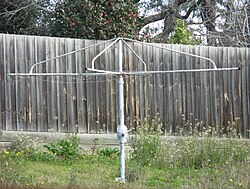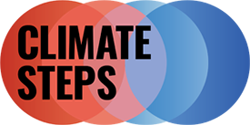I keep wanting to write this post to the tune of Randy Rainbow’s latest satirical song (https://www.youtube.com/watch?v=WimbyL_25Nw), which I just watched about three times straight:
- Stuck at home, yet saving the climate
- Stuck at home, la la…
But such musical talent escapes me. Obviously. What I will channel instead is what I inherited from my mother – organizational talent par excellence. Need a list of things you can do to save the planet while stuck at home or in the yard, self-isolating? Well, there’s no need to binge-watch TV shows you aren’t interested in. Instead, see said list below and mix-and-match what works for you. I recommend skimming, and then diving into the sections you want:

- How about going through those cookbooks you’ve built up over the years and test out more plant-based meals. Eating a mostly vegetarian/vegan diet is one of the top five climate change solutions, as determined by the scientific group Project Drawdown (an organization that studies the life cycles of different factors behind climate change.) Please note that some animals, if properly incorporated into mostly natural ecosystems that depend on them, do provide a carbon-safe source of meat. But also see https://climatesteps.org/2018/01/17/a-vegetarian-for-25-years-where-has-that-gotten-the-world/
If you parents or friends never gave you vegetarian or vegan cookbooks, and you want to know where to start, check out these two lists of vegetarian/vegan cookbooks https://nymag.com/strategist/article/best-vegetarian-vegan-cookbooks.html and https://foodrevolution.org/blog/best-plant-based-cookbooks/.
Also, if you want to know strategies for going vegetarian/vegan, see www.eatright.org/food/nutrition/vegetarian-and-special-diets/vegging-out-tips-on-switching-to-a-meatless-diet.
- Also read climate books: see our Climate Books page! Most are available as e-books now. I have already downloaded two.

- Get outside, yet be safe:
- Chalk it up! Get creative and colorful with chalk on your front sidewalk regarding climate change. More people are walking and running in neighborhoods to keep from getting stir crazy, so grab their attention – but be positive and constructive with what you write. Build up your community.
- Hang your laundry outside to dry through a line or Hill’s hoist (a rotary clothes line as below.) Or if you are in an apartment, get a folding drying rack, or one of those lines that connect to the walls of the shower.

- Outside Social Communication, continued:
- Make a climate sign and hang outside for your neighbors or curious pedestrians! See this link for wonderful inspiration: https://www.petworthnews.org/blog/crestwood-banners.

- Dig in:
- Save your corner of the world. Garden. See https://climatesteps.org/2020/03/20/change-lawns-to-actual-life/.
- Install rain barrels. Check your local region’s regulations – and opportunities – regarding rain barrels. Some cities give them away, others prevent them (often depending on historical water laws.)
- Oh, and buy or build a compost bin. Food waste shouldn’t be wasted. That is another huge area where we can reduce climate emissions (#3 and #1, depending on the scenario – https://www.drawdown.org/solutions/table-of-solutions); reducing our food waste, and then coposting it. There are so many compost bins out there, that we recommend you just start googling. Someday we’ll write a post…Someday soon….
-

Photo by Retha Ferguson on Pexels.com
- Connect to the Internet, learn, and be an influencer:
- Can’t protest in person with friends? Do it digitally. Fridays Climate Strikes have become Fridays Digital Climate Strikes. Post a picture of yourself with a strike sign and share with friends. See also: https://www.nytimes.com/2020/03/19/climate/coronavirus-online-climate-protests.html.
- Learn. Be trained.
- How to Advocate. https://www.facebook.com/CitizensClimateLobby/videos/570146400266499/?t=0.
- From Climate Science to Action (by the World Bank) https://www.coursera.org/learn/climat e-science.
- A useful course on how to plan climate action. https://www.coursera.org/learn/act-on-climate.
- For youth – several training courses that are pretty significant https://www.sunrisemovement.org/sunrise-school.
- Learn via shorter webinars as well, such as:
- Coral Reef Alliance Earth Day Webinar, April 22nd, at 12 PM Pacific time. https://zoom.us/meeting/register/v5cucOiurzIuuGJfnIfqfRadaY1Uz9HxTw.
- Fridays for Future’s Talks for the Future https://www.fridaysforfuture.org/.
For those here in the U.S. there is a great internet tool for determining how climate action is going to impact one’s area at: https://crt-climate-explorer.nemac.org/. Type in your zip code and explore – especially the climate charts (use the dropdown menu on the left and choose the number of 95+ degree days – boy, is that a wake-up call.) Use these graphs to then talk about climate change to your friends, families, neighbors (digitally of course), and especially to your representatives – noting your worries about what is going to happen to your home region.

- Internet efforts, continued (warning – emojis replace images here).
- Maybe you can lead for the folks in your neighborhood or building 🏢🏰🏘🏯. Start a digital campaign to green your Homeowners Association (HOA), for instance.
- Contact your state and federal legislators about climate action, of course, via phone or email.
- Even better, comment on public regulations; this has significant impact. (By U.S. law, federal agencies have to at least read and acknowledge the issues raised in comments; public comments have been shown to change at least the tone of a regulation. REF)
- Post some questions or some pictures of your actions to your neighborhood listserv — get a conversation going.
- Take a break and research bus maps for your area, carpooling, or how to share shopping obligations with neighbors. 🚌🚌🚌🚌🚌🚌
- Consider joining regional electric vehicle (EV’s) organizations, so you can learn more about what it’s like having an EV in your area. These orgs are almost everywhere.
- Contact your local electric companies to let them know that you support any and all efforts to move to renewables.
- Also, start lobbying your employer now, if possible, for telecommuting options from home for when things get back to semi-normal.
- 🌼Research garden clubs in your area, get on their listservs, and ask how many folks use native species and ecofriendly options, and note why you might be hesitant about certain chemicals. 🌼
- Finally, if your kids are still going to school online, encourage school activities that educate about climate change. Or press for activities for next year. 🏫
- Oh – and while you are browsing the internet, plant trees. Use Ecosia as your web browser and they will plant trees for you. https://www.ecosia.org/
When face-timing with your parents, friends, or others who haven’t understood your climate worries, tell them this – that the underlying worry they feel about COVID-19 – food and job insecurity – this is what your climate worry feels like.

- Wait, lift your hands from the keyboard and take a good, hard look around. What can you do to walk the talk (and share pictures of in the process)? Make your house efficient! It will save energy and money that adds up and will keep you physically active too.
- Caulk your windows. It’s amazing how much money it saves. It decreased my electric bill by 28%.
- Put foam covers (sold in hardware stores, which are mostly open) inside your wall outlets and light switches.
- Now, light an incense stick if you have one, and go around the house near windows and elsewhere and look for drafts. Then figure out what to do about them.
- Install that programmable thermostat you bought a while back.
- Okay – the most basic step of all, replace at least one lamp with an LED bulb and buy LED bulbs to replace others as they burnout. This actually does make a significant difference. Not only to your bill, but to your safety (as they last forever and, thus, you don’t have to get up on a ladder). Best, LEDs have reduced greenhouse gas (GHG) emissions by as much as 1.5 % (REF), which is a pretty big chunk for such a easy thing.
- Reconnect to the blasted internet and…
- Take an online energy audit, such as on the Energy Star website or via https://engage.energysavvy.com/report/ed2e8377-5e7d-4c25-a9d8-0b773972eaa8/
- Study what it means to have more efficient appliances www.energystar.gov, especially electric, as they are less dependent on fossil fuels.
- Research and order online for later delivery:
- Storm windows, shutters, and/or awnings (useful not only for energy saving, but for storm proofing);
- Thicker-paned windows;
- Thick curtains for homes in temperate zones or if you are a huge fan of AC;
- Insulation for the attic;
- Solar panels, if available in your area. (Some places have put up crazy barriers, whereas others support them with great incentives.) – one of the top 10 carbon-emission-fighting methods, according to Project Drawdown.
- Solar ovens!
- Solar tubes! (A tubular skylight that is very energy efficient.)
- Mini-wind turbines while we’re at it; and
- Green roofs (i.e., plants on roofs — they provide massive insulation, plus bee-friendly flowers.) https://www.washingtonpost.com/news/where-we-live/wp/2013/08/14/a-petworth-homeowners-green-roof-one-year-later/?utm_term=.101cd0d0a091. (see the article for a link to all eight posts walking through the installation stages.)
During these hard times, “green” orders will have an even greater impact in steering industry for the future.
- Read our Building page and the Your Home post for more details on some of these.
- Also, think for a moment. While stuck at home, how much plastic are you using? Probably far less than before (true for me at least). Take note of how much less – or more – plastic you are using, then think about going even more earth-friendly.
- Use and wash old rags instead of using wipes (REF).
- Research and replace the plastic in your bathroom with items not encased in petroleum products, such as shampoo and conditioner bars (REF; brands include Lush (temporarily closed), Ethique (open)), toothpaste tablets (also Lush.com) – or google to see what ingredients maybe needed to make your own toothpaste, etc.
What else? Comments welcome. We’ll keep adding to this list.
- Oh, and for parents with kids (there aren’t really other types of parents, despite what us cat owners think), please see our Parents & Kids page, which we’re admittedly still building. But some good links and resources are there.
Thanks to Rachel Kahn for writing a post in our Climate Steps Facebook forum that asked the question about what we can do while self-isolating, thus inspiring this post. And thanks to Ann and Rachel for bringing some ideas into the page. You rock!
The image below looks like he’s superman about to get in his colorful superhero Lycra suit and save the planet. Exactly – except we get to keep on the sweats.




Great post. Wonderful ideas to have, especially while spending so much time at home.
Thank you!
Like!! I blog frequently and I really thank you for your content. The article has truly peaked my interest.